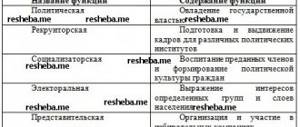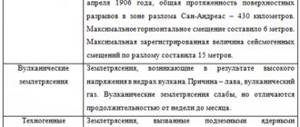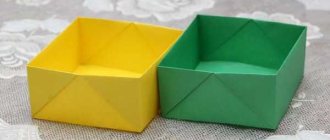Technological map for music
TECHNOLOGICAL LESSON MAP
Item:
Music.
Class:
3 "B".
UMK:
"Perspective".
Author of UMK
:E.D.Kritskaya, G.P.Sergeeva, T.S.Shmagina.
Lesson topic
: “Images of nature in music.”
Lesson type:
A lesson in discovering new knowledge.
Lesson type:
Problem lesson, conversation.
The purpose of the lesson:
Creating conditions for the formation of knowledge about images of nature in music and the ability to analyze musical works.
Tasks for the teacher:
Educational
: to generate knowledge about images of nature in music through the analysis of musical works; build an analysis of each piece of music listened to; learn the song “Wider Circle”.
Developmental
: develop the skill of expressive, loud, rhythmic, confident singing to fully understand the meaning of the music test and images of nature in music; develop psychological processes, that is, memory, attention, speech, thinking, imagination and creativity.
Educational
: cultivate love and interest in music; ability to work in pairs and individually.
Lesson objectives for the student:
for knowledge:
develop a music lesson plan; write a dictionary of aesthetic emotions; reproduce existing vocal skills when learning the song “Wider Circle” and knowledge about nature.
for understanding:
demonstrate an understanding of the facts, namely explain the characteristics of images of nature; distinguish between the concepts of images of nature; retell the image of nature for each season; describe in your own words the image of nature using a complex of adjectives.
for use:
apply knowledge in specific situations, namely demonstrate musical abilities when learning the song “Wider Circle”; paint a set of adjectives on the image of nature of each season.
for analysis:
break the complex into simple parts and find clear information for generalizations, namely, compare musical works with each other when listening to them; study in detail the song “Wider Circle”, the image of nature of each season; establish the differences between the images of nature of each season.
for synthesis:
collect different ideas into one whole or propose an alternative solution, namely compiling a dictionary of aesthetic emotions.
for evaluation:
make a judgment or defend a position based on information and criteria, namely, assess your skills and abilities when performing practical tasks, challenge your point of view, criticize the opinion of a classmate, express your opinion on a new topic or a separate item studied on a new topic.
| Planned results of studying the topic | ||
| Subject | Metasubject | Personal |
| The student will learn: -formation of an idea about the role of music in a person’s life, in his spiritual and moral development; -formation of a general idea of the musical picture of the world; -the ability to perceive music and express one’s attitude towards musical works; -the ability to relate emotionally and consciously to music of various styles; -the ability to embody musical images when performing vocal and choral works; - to form knowledge about images of nature in music through the analysis of musical works; -analyze each piece of music listened to; -learn the song “Wider Circle”. | The student will learn: 1.Cognitive UUD: learn ways to solve search problems; -master the initial forms of cognitive and personal reflection; - master the skills of semantic reading of text in accordance with goals and objectives; - master the logical actions of comparison, analysis, generalization based on characteristics, establish cause-and-effect relationships, and reason; -develop psychological processes in oneself, that is, memory, thinking, speech. 2.Regulatory UUD : - master the ability to accept and maintain the goals and objectives of educational activities; 3.Communicative UUD: interaction with the teacher and class. | The student will have the opportunity to form: -love, interest in the subject of music; - ability to work individually and in pairs; -motives of educational activities and personal meaning of learning; -the foundations of Russian civic identity, a sense of pride in one’s Motherland; - a holistic, socially oriented view of the world in its organic unity and diversity of nature; -development of motives for educational activities and the formation of personal meaning of learning; -formation of aesthetic needs, values and feelings; -development of ethical feelings, goodwill and emotional and moral responsiveness, understanding and empathy for the feelings of other people. |
Music lesson technological map
-We know that there are three “pillars” or three main genres that help to understand music. Name them?-Today we will introduce you to the second “whale” or genre. What genre is this?
-Then guess what is the topic of our lesson today?
-You're right, today you and I will talk about different genres.
-Tell me, when do people usually dance?
-Do you know when the dance appeared?
-Initially, dance arose from a variety of movements and gestures associated with labor processes and a person’s emotional impressions of the world around him. Almost all important events in the life of primitive man were celebrated with dances: birth, death, war, election of a new leader, healing of the sick.
The dance expressed prayers for rain, sunlight, fertility, protection and forgiveness.
The movements were gradually subjected to artistic generalization, as a result of which the art of dance was formed, one of the oldest manifestations of folk art. Each nation has its own dance traditions
-Which of you has danced or gone to a choreographic studio at least once in your life?
-What dances do you know?
-What music did you listen to when you entered the classroom at the beginning of the lesson?
(turns on the music again if the children find it difficult to answer
-Yes, Polish.
Polka is a fun dance. It is danced in pairs easily, abruptly and with jumps. The guys rush around in a circle, pair after pair. And suddenly, the movements change. The movements are different, they stomp on their heels, show their heels and toes. And then it changes again.
— Polka is a fast, lively Central European dance, as well as a genre of dance music that first appeared in the Czech Republic, that is, it is a Czech folk dance.
I suggest you watch a video clip of this dance.
-Russian composer P.I. Tchaikovsky wrote a piece for piano and called it “Italian Polka”. I suggest you listen to it, but before listening, pay attention to how many parts this piece is divided into.
-What did you notice that these parts are similar to each other?
-What was the character of the music?
-I suggest you dance a polka to the music of Tchaikovsky.
-First, divide into pairs.
Shows polka movements without music and then with music
.
-We talked to you about the polka. And now I suggest you talk about the waltz, which is called the king of dances all over the world.
-Did you know about this?
-The waltz was born on the border of three countries: Germany, Hungary and the Czech Republic in the 17-18 centuries, many years ago, but it is still considered the best dance in the whole world. Other dances fade away and change, but the waltz is eternal.
-The great Russian composer P.I. Tchaikovsky wrote a lot of beautiful waltzes and although he lived more than 100 years ago, I think you will really like his waltz.
-Raise your hands up and swing them to the beat of the music; when the music changes, put your hands on your belt.
-The waltz of I.P. sounds. Tchaikovsky from the ballet "The Sleeping Beauty"
-What was the character of the music?
-What are the characteristic movements of the waltz?
-Let's try to perform movements to this music.
Shows movements to music.
—
We have already become acquainted with dances that come from the Czech Republic, Hungary and Germany, and now let's talk about our Russian folk dance, and what kind of dance you will tell me after listening to the music.
The song “There was a birch tree in the field” sounds
-So what folk dance will we talk about today?
-What movements are typical for a round dance?
-Round dance is an ancient folk circular mass dance-game. Round dances have several genres: round dance-song and round dance game. The dancers move in a circle, holding hands. Often, a round dance is a ritual dance and contains elements of dramatic action.
-Let's do a round dance with you too.
Shows movements in a round dance.
Technological map of a music lesson (grade 2). Topic: Children's musical theater. Opera
Guys, what magical object in Russian folk tales helps the heroes find the right path, shows the way?Teacher: Here it is, in my hands. “A magic ball - a skein of thread, show us the way, lead us into a fairy tale.” (The teacher performs some manipulations with the ball - throws it up, turns around - a presentation opens on which the words are placed - children's musical theater. opera
Look, everything is ready for the start of the performance: the audience is sitting in the hall, there are colorful decorations on the stage, and the artists have put on their makeup and are ready to perform.
Please name the main characters of the opera-fairy tale “The Wolf and the Seven Little Goats”.
U: So, we remembered the main characters of the fairy tale and are now ready to watch the opera. The lights in the auditorium went out, and a man walked up to the conductor's stand. Tell Dunno who will conduct the orchestra?
Children:
Conductor.
Teacher:
A wave of the conductor's baton - and sounds poured into the silent hall. Guess and tell Dunno, listening to the music, which hero of the opera “The Wolf and the Seven Little Goats” appeared on our imaginary stage? Determine the character of the hero.
(Listening to the mother goat song)
Guys, what kind of fairy tale hero is this?
What is the character of Mother Goat?
Tell me, guys, what song did Mother the Goat sing?
How did you know that it was a lullaby?
Guys, look Dunno has prepared cards for you. What do you think this is?
That's right, these are the names of the kids. Let's read the names?
Why did mom give them such names?
Dunno drew for you one thing from each of the kids. But he got confused in the drawings and doesn’t understand which kid belongs to which one. Shall we help our hero?
U: Well done, you answered correctly! Let's count how many names are on the board?
Guys, you and I lost one kid, but I have his weight. (cubes). What do you think is the name of the 7th kid?
Listen to the melody and answer the question How do you imagine your baby?
(Listening to the theme of the Kid and the Military March).
How does the Kid appear to us?
Guys, tell me, why did the composer include a march in the characterization of this kid?
U: Let’s imagine, guys, that we found ourselves at the parade together with the Kid. I will play the role of the baby, and you and my friends will play the role of the kids. And together we will march to this music.
(Baby's theme and Military March sound).
Call one student to play the role of a kid.
Well done, it turned out very well - you and I, together with the heroes of this fairy tale, attended a fabulous military parade and helped the Kid feel like a real commander. Now, please, take your seats.
Guys, answer me this question -
How does the fairy tale “The Wolf and the Seven Little Goats” end?
That's right, the kids are alive, rejoicing and singing the final song all together. And if they all sing together, what is this singing called?
U: Correct! Listen to the final song of the kids and answer the question: what mood does the music convey?
(Listening to the final choir “Seven Little Goats”).
U: What is the mood of the kids in this choir?
To perform the final song, you need to imagine yourself in the role of the main characters - the kids and learn the final chorus.
(Learning the choir “Seven Little Goats”).
(Performance of the choir “Seven Little Goats.”)
Guys, look at Dunno showing us some words. (March, song, dance
). What could it be?
Let's listen carefully to the music and find where the music is similar to a march, where to a song and where to a dance.
Let's show these transitions with movements.
- March with your hands from your seats.
— Song - cotton
- musical - smooth movement of the hand.
And now we will play like real artists.
There are 7 kids at the board. students sing and play instruments.
U: Guys, tell me, what role did you and I find ourselves in when we performed this choir?
U: That’s right, we found ourselves in the role of musical theater artists and were able to perform a choir from...
T: Guys, what is the difference between children's opera and opera?
U: Correct! The children's opera was written specifically for children and children themselves can perform it, which is what we have just done.


